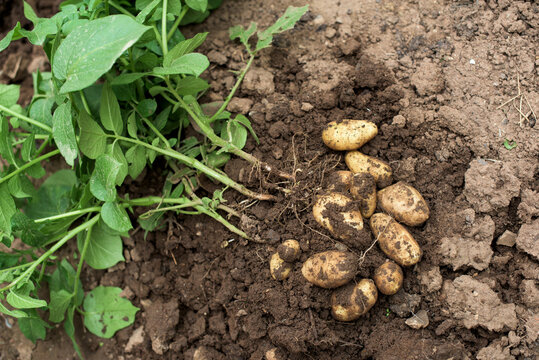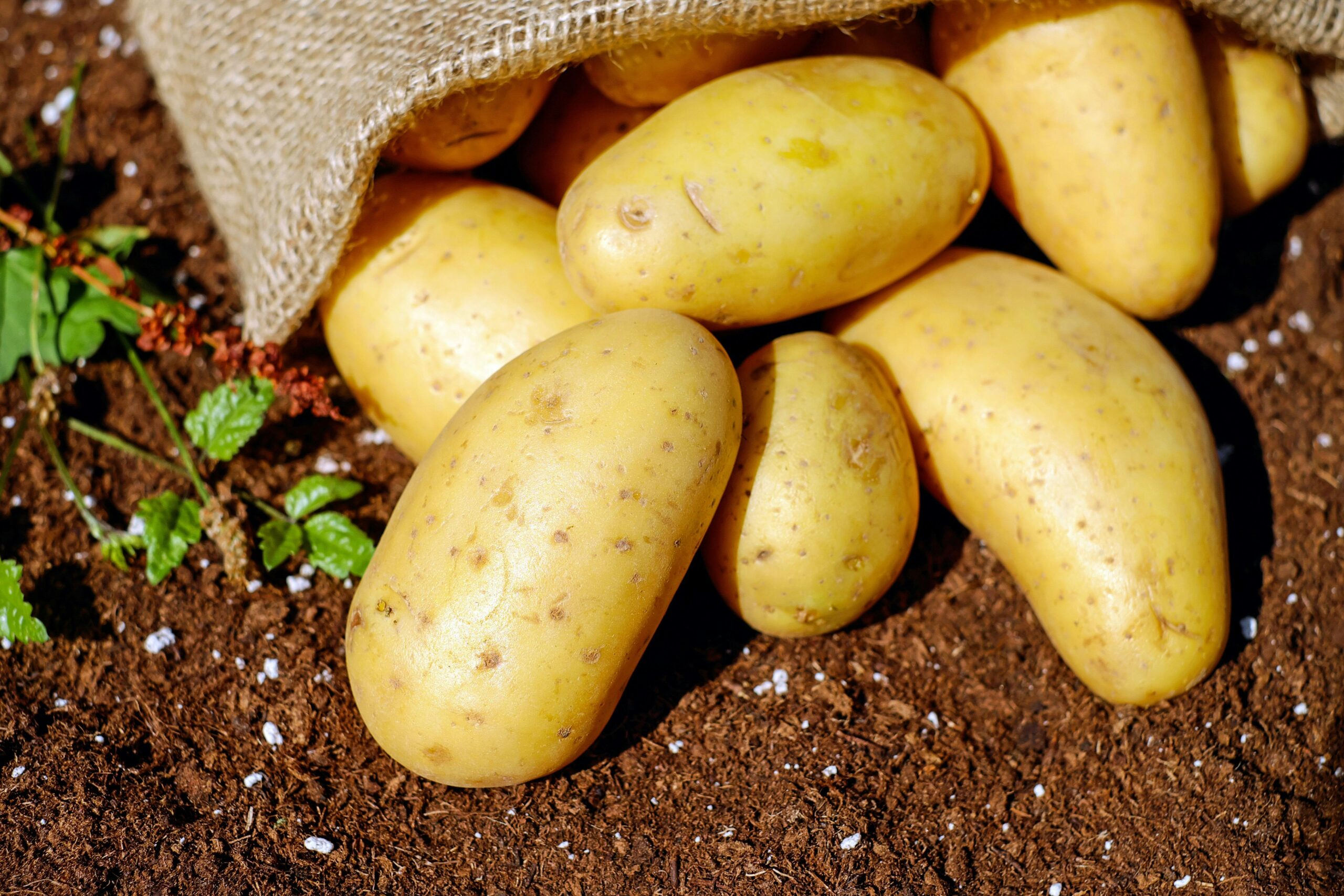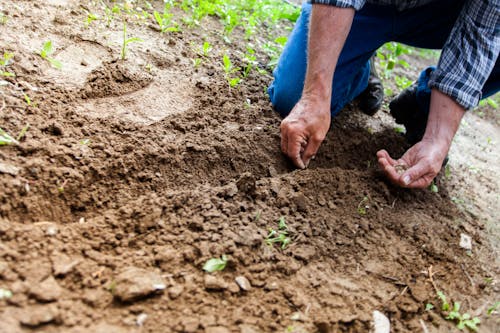Unlocking the Best Time for Planting Potatoes in Texas: Expert Tips & Guidelines
Discover the optimal timing for planting potatoes in Texas to ensure a successful harvest. Learn the ins and outs of potato cultivation, from soil preparation to harvesting, and maximize your yields with expert advice.
Introduction:

Potatoes are a versatile and beloved staple in countless cuisines, and Texas offers an ideal environment for their cultivation. However, timing is crucial when it comes to planting potatoes in Texas to capitalize on favorable growing conditions and achieve a bountiful harvest. In this comprehensive guide, we’ll delve into the optimal timing for planting potatoes in the Lone Star State, providing valuable insights and practical tips to help you cultivate a thriving potato crop.
Selecting the Right Potato Varieties
When it comes to planting potatoes in Texas, selecting the right varieties is the first step towards success. Different potato varieties thrive in various climates and soil conditions, so it’s essential to choose those best suited to Texas’s unique environment. Varieties like Russet Burbank, Yukon Gold, and Red Pontiac are popular choices for Texas gardeners due to their adaptability and excellent flavor profiles.
Understanding Texas Climate Zones
Texas encompasses diverse climate zones, ranging from humid subtropical in the east to arid desert in the west. Understanding your specific climate zone is crucial for determining the optimal timing for planting potatoes. Consult the USDA Plant Hardiness Zone Map or local extension offices to identify your zone and tailor your planting schedule accordingly.
Preparing the Soil for Planting
Before planting potatoes in Texas, it’s essential to prepare the soil properly to provide an optimal growing environment. Potatoes thrive in loose, well-drained soil with a pH between 5.8 and 6.5. Incorporate organic matter, such as compost or aged manure, into the soil to improve structure and fertility, ensuring healthy root development and vigorous growth.
Timing for Planting Potatoes in Texas
The timing for planting potatoes in Texas depends on several factors, including your location within the state, climate conditions, and desired harvest time. In general, Texas gardeners can begin planting potatoes in late winter to early spring, typically from February to March, depending on local conditions. Planting earlier allows potatoes to mature before the onset of hot summer temperatures, while planting later may result in smaller tubers due to heat stress.
Optimal Planting Depth and Spacing

When planting potatoes in Texas, it’s essential to observe proper planting depth and spacing to maximize yields. Plant seed potatoes, which are small tubers or cut pieces of larger potatoes, at a depth of 3–4 inches in rows spaced 2–3 feet apart. Space individual potato plants 8–12 inches apart within the rows to allow for adequate root development and prevent overcrowding.
Providing Adequate Water and Nutrients
Potatoes require consistent moisture throughout the growing season to develop healthy foliage and tubers. In Texas, where hot and dry conditions are common, supplemental irrigation may be necessary, especially during periods of drought or high temperatures. Apply a layer of organic mulch, such as straw or shredded leaves, to retain soil moisture and suppress weed growth, ensuring optimal growing conditions for your potato plants.
Protecting Potatoes from Pests and Diseases
While potatoes are relatively low-maintenance crops, they are susceptible to pests and diseases that can impact yield and quality. Keep an eye out for common potato pests such as potato beetles and aphids, and take proactive measures to control infestations using organic methods like handpicking or insecticidal soap. Additionally, practice crop rotation and proper sanitation to minimize the risk of soil-borne diseases such as potato scab and late blight.
Harvesting and Storing Potatoes
Harvest potatoes in Texas when the plants have reached maturity, typically 2-3 weeks after the foliage begins to die back. Use a garden fork or shovel to carefully dig up the potatoes, taking care not to damage the tubers. Allow freshly harvested potatoes to cure in a cool, dark place with good ventilation for 1-2 weeks to toughen the skins and enhance storage life. Store cured potatoes in a cool, dry environment away from light to prevent sprouting and prolong freshness.
Conclusion:
Timing is critical when it comes to planting potatoes in Texas, and understanding the optimal planting window can make all the difference in achieving a successful harvest. By selecting the right varieties, preparing the soil, and following proper planting and care guidelines, you can cultivate a thriving potato crop that will delight your taste buds and nourish your body. Get ready to dig in and enjoy the fruits of your labor as you embark on your potato-growing adventure in the Lone Star State.
FAQs
- What is the best month to plant potatoes in Texas? The best month to plant potatoes in Texas is typically February to March, depending on your specific location and climate conditions.
- Can I plant potatoes in containers in Texas? Yes, you can plant potatoes in containers in Texas, provided they have adequate drainage and receive sufficient sunlight. Use large containers filled with well-draining potting mix and follow the same planting and care guidelines as for garden-grown potatoes.
- How long does it take for potatoes to mature in Texas? Potatoes typically take 90–120 days to mature in Texas, depending on the variety and growing conditions. Harvest potatoes when the foliage begins to yellow and dies back, indicating that the tubers are ready for harvest.
- Can I plant potatoes in the summer in Texas? While it’s possible to plant potatoes in the summer in Texas, it’s generally not recommended due to the high temperatures and risk of heat stress. Potatoes prefer cooler growing conditions and may produce smaller tubers or fail to thrive in hot summer weather.
- What pests and diseases should I watch out for when growing potatoes in Texas? Common pests and diseases that affect potatoes in Texas include potato beetles, aphids, potato scab, and late blight. Monitor your potato plants regularly for signs of infestation or disease, and take appropriate measures to control and prevent problems.
- How should I store harvested potatoes in Texas? Store harvested potatoes in a cool, dark place with good ventilation, such as a root cellar or pantry. Avoid storing potatoes near onions or other ethylene-producing fruits and vegetables, as they can cause potatoes to sprout prematurely.



